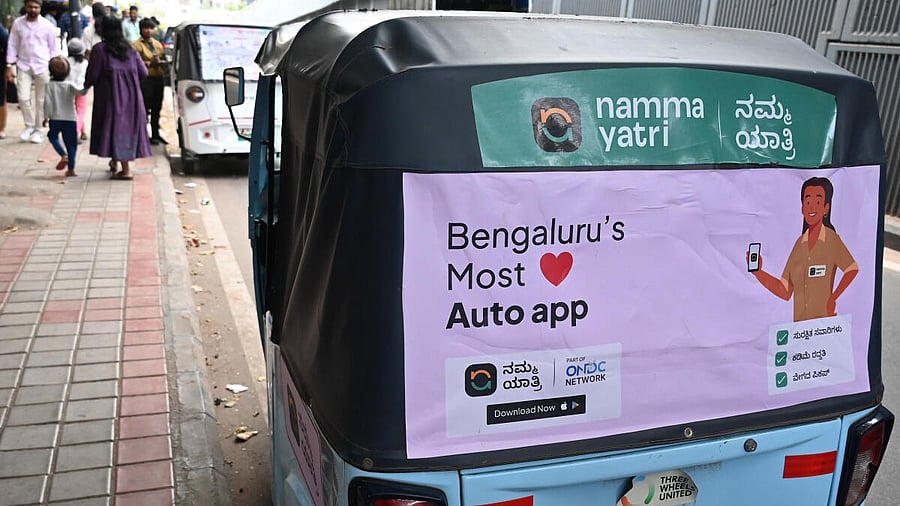
An autorickshaw with a signage of 'Namma Yatri' in Bengaluru.
Credit: DH File Photo/Pushkar V
Bengaluru: Namma Yatri, the first ride-hailing firm to introduce 'advance tips', has defended the practice, comparing it to the 'Tatkal' charges levied by the Indian Railways.
Advance tips have come under the scanner, with most passengers saying they do not get rides without adding them beforehand.
Namma Yatri was the first to implement it, and other platforms like Ola, Uber and Rapido followed suit.
Namma Yatri, which started its journey with the "driver first" motto, has faced criticism from both drivers and passengers for its "improper" pricing structure, among other issues.
In late May, Union Consumer Affairs Minister Pralhad Joshi called advance tips an "unfair practice".
A representative of the Auto Rickshaw Drivers' Union, which had helped Namma Yatri onboard drivers, called the practice "unethical".
However, Namma Yatri co-founder Shan MS argues advance tips are "voluntary", but necessary to maintain a balance in the market.
"We've clarified that the tips are purely voluntary additions. In fact, we got the idea to add the tipping feature from customers. We don't show the tipping option before the ride is broadcast to the drivers. It is only shown after no driver in the vicinity accepts the ride within the average time of 20 seconds," said Shan.
He compared it to Tatkal charges.
"When you opt for Tatkal, you don't question why you're being charged an additional fare. Similarly, tips are used because during peak time, one's meeting is more important than waiting for 10 more minutes. The consumer is ready to pay a slightly higher fare at that point, which is optional," he told DH.
Namma Yatri facilitates about 1.5 lakh auto rides in Bengaluru daily, holding a 30% market share. Shan claims only 14% passengers opt for tips and believes removing the option will create an imbalance in the market.
"The other option is... black box surge pricing (algorithm-based surge pricing), which can go crazy. Or we could stick to the base fare and not do anything, which will push drivers off the platform, as they will prefer taking offline rides. This will not work in the consumer's favour. Instead of paying a tip of Rs 20-30 more, the consumer will end up paying two to three times the base fare offline," he said.
According to him, drivers can choose within a range of fares — divided between base fare, middle bucket and larger bucket. About 20-25% of the drivers opt for the base fare, 15-20% opt for the middle bucket, and over 55% of the drivers opt for the larger bucket.
"The first preference is given to drivers who opt for the base fare, and only when no driver accepts at the base fare, the ride is offered to drivers charging a higher fare. However, the driver believes the base fare does not account for inflation," he said.
Shan also claimed for revising the auto meter fare, which is Rs 30 for the first 1.9 km and Rs 15 for every subsequent kilometre.
'Digital bargaining'
Satya Arikutaram, a mobility expert who worked with Namma Yatri in the initial years, has criticised advance tips. "Digital bargaining is worse than street side bargaining. Why? An inscrutable algorithm is an intermediary," he noted.